A Few Examples of Resistance Against Racism in BC Schools
Historically racism was experienced and continues to exist in B.C.’s education system. While there is still work to be done to create safe, caring, and inclusive schools for everyone, individual and collective acts of resistance against racism can provide inspiration for social change. Here are some examples. Additional information is available on the Resources page.
-
Emma Stark’s parents were formerly enslaved and chose to move to Salt Spring Island to escape the discrimination they faced in America. The family moved to the Nanaimo area after two Black immigrants were murdered on Salt Spring Island. Emma completed high school in Nanaimo and at 18 was hired to teach in a one-room school in the Cedar District. She was the first Black teacher on Vancouver Island and one of only 32 public school teachers in B.C. at that time.
-
Irene Kelleher was born and raised in Matsqui, B.C. She was the first Indigenous person to be awarded a teaching certificate in the province. Because of her mixed-race identity, she was unable to find a teaching job close to home. Instead, she taught in small communities throughout B.C. She returned to the Fraser Valley to teach in Abbotsford in 1939. She retired from her position as Principal of Abbotsford Elementary School in 1964. In 2022, the Abbotsford School District opened a new school named in her honour, Irene Kelleher Totí:ltawtxw.
-
In July 1922, the Victoria School District Board (VSDB) voted to exclusively segregate all Chinese students from their schools. The local Chinese community organized to fight segregation in Victoria’s public schools by having Chinese students go on strike. In November 1922, The Chinese Free School was established for the students who had advocated for Chinese language and culture to be taught, and who were barred from the VSDB. While the strike ended after one year, partial segregation for Chinese students existed until the 1940s.
-
Barbara Howard was the first Black female athlete to represent Canada in an international competition. As a sprinter, she competed as a member of the Canadian track and field team for the 1938 British Empire Games. She was also the first person from a racialized community to be hired as a teacher by the Vancouver School Board. She had a 43-year career in education, including working 14 years as a physical education teacher.
-
Vivian Jung was the first Chinese-Canadian teacher to be hired by the Vancouver School Board. She was required to obtain a lifesaving certificate to complete her teacher training, but the City of Vancouver’s policy at the Crystal Pool at Sunset Beach prohibited her from swimming because she was not white. She challenged this bylaw and protested with students and colleagues, which led to an end to the segregation rule, or ‘colour bar,’ at Vancouver’s only public swimming pool.
-
As a result of Indigenous community advocacy, the National Truth and Reconciliation Commission (TRC) was formed in 2008 by the Canadian Government. The purpose of the TRC was to investigate the damage of residential schools on Indigenous communities. It also was to propose solutions and supports to prevent this abuse from occurring again. The Truth and Reconciliation Commission released its final report in 2015, including 94 Calls to Action.
-
ERASE is a strategy developed by the Province of B.C. to build safe and caring school communities. The strategy aims to empower students, parents, educators, and the community partners who support them to:
- Get help with safety challenges
- Report concerns to schools
- Learn about complex issues facing students
ERASE includes a tool to anonymously report safety issues at school, like racism. Students, families, community members, and staff can use the tool to report incidents of racism to their school administrators and district representatives.
-
The Professional Standards for B.C. Educators, added Standard 9 stating that: “Educators respect and value the history of First Nations, Inuit, and Métis in Canada and the impact of the past on the present and the future. Educators contribute towards truth, reconciliation, and healing.”
Watch Standard 9 – Truth and Reconciliation, Moving Forward Together for more information.
-
B.C.’s K–12 Anti-Racism Action Plan is part of the B.C. government’s commitment to dismantle systemic racism in the education system. This action plan was created through extensive and on-going discussions with students, rightsholders, Indigenous partners, education partners, district, and school leaders, as well as community organizations. It is designed to support anti-racism system-wide change across the province. The creation and implementation of the action plan is a collaborative process among all people who participate in the education system.
Many people contributed — and continue to contribute — to the action plan, including Indigenous and racialized students who participated in the Minister’s Anti-Racism Youth Dialogue Series during 2022. Quotes from these students appear throughout the modules in this course.
-
Many students across B.C. are creating public awareness about racism in schools. One of many examples includes students in SD 37 (Delta) who created a video that shares their lived and living experiences with racism in schools. This video is publicly available on the school district website.
-
Education partner groups, unions, and school districts across B.C. are creating anti-racism policies and resources that advocate for racial justice. All school districts and independent schools are required to have codes of conduct and policies to address racism and discrimination. It is important to learn about your school or district’s anti-racism policies and practices.
Reflection
Consider what you have learned about systemic racism and resistance to it. How may racism have impacted, or continue to impact, the school community you work in? What actions might you take in response to this?
The following prompts might be helpful.
- What do you want to learn more about?
- What questions are coming up for you?
- What next step can you take to learn more about anti-racism policies, practices and/or advocacy within your school or school district?
